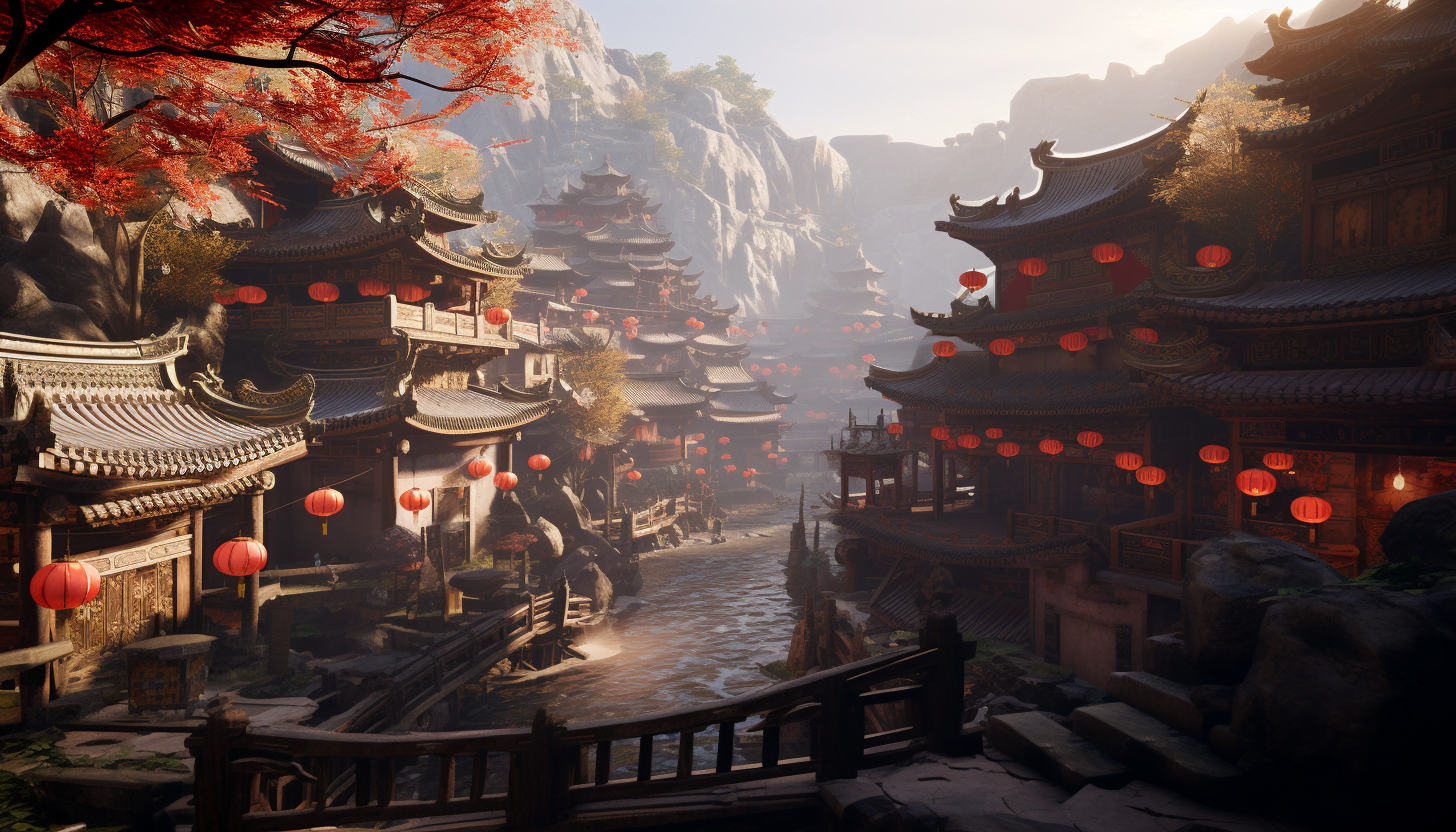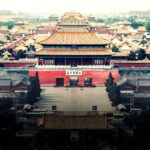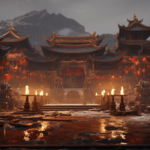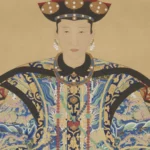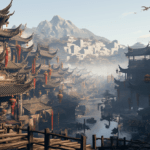In the vast landscape of Chinese art, few periods have left a more lasting impact than the Han Dynasty. Spanning from the third century BCE to the third century CE, this era witnessed the emergence of a truly distinctive artistic identity that continues to captivate audiences worldwide. Journey with us as we explore the historical development of art in China, from the Han Dynasty to the contemporary Chinese art market.
Explore Fascinating Han Dynasty Artifacts: Dive deeper into the world of Han Dynasty Artifacts to uncover the rich history of these ancient treasures.
Historical Development to 221 B.C.E.
The origins of Chinese art can be traced back to the prehistoric Neolithic period, marked by the creation of pottery vessels and primitive cave paintings. However, it was during the Shang and Zhou Dynasties (1600–256 BCE) that more sophisticated artistic expressions began to emerge. Ritual bronze vessels, incredibly intricate jade carvings, and lavish decorations showcased the refined taste of this early period.
Early Imperial China (221 B.C.E.– 220 C.E.)
A pivotal turning point in Chinese history occurred when the first emperor, Qin Shi Huang, united China in 221 BCE and established the Qin Dynasty. Art during this period mainly served a propagandistic function, glorifying the emperor’s rule and the centralized authority. Elaborate pottery figures, including the renowned terracotta warriors, revealed the emperor’s desire for immortality in the afterlife.
Period of Division (220–581)
Following the collapse of the Qin Dynasty, China entered a period of division as rival kingdoms vied for power. Despite the political turmoil, artistic creativity continued to flourish. Buddhist influences began to permeate artistic expressions, giving rise to intricate Buddhist cave temples, such as the iconic Mogao Caves in Dunhuang. Sculptures, murals, and vividly colorful frescoes adorned these sacred sites.
The Sui and Tang Dynasties (581–960)
With the reunification of China under the Sui Dynasty, a golden age of Chinese art commenced during the Tang Dynasty. Silk painting and calligraphy reached new heights, with artists skillfully capturing the elegance and grace of the natural world. The Dunhuang Cave murals exemplify the Tang Dynasty’s artistic achievements, showcasing a fusion of diverse regional styles and religious depictions.
Song and Yuan Dynasties (960–1368)
The Song Dynasty witnessed a shift towards a more refined and delicate aesthetic sensibility. Landscape paintings became increasingly popular, reflecting a deep appreciation for nature and individualism. Artists like Fan Kuan and Ma Yuan perfected the “mountain-waters” style, emphasizing the harmonious relationship between humanity and the natural world. During the Yuan Dynasty, Mongol rule brought about cultural diversity, with art reflecting a blend of Chinese, Islamic, and Central Asian influences.
Late Imperial China (1368-1911)
As China entered the Ming and Qing Dynasties, art underwent significant transformations. Porcelain production reached new heights, exemplified by the world-renowned blue and white ceramics. Elaborate silk textiles, intricate woodblock prints, and delicate lacquerware showcased the immense creativity and technical prowess of artisans during this time. The cultural exchange with European traders during the late Qing Dynasty also left a profound impact on Chinese art.
New China Art (1912-1949)
With the downfall of imperial rule and the establishment of the Republic of China, artists grappled with the notion of cultural identity amidst a rapidly changing society. Rejecting the traditional conventions, pioneers like Xu Beihong and Lin Fengmian embraced Western artistic techniques while infusing their works with Chinese themes. This period laid the foundation for the birth of modern Chinese art.
Communist Art (1950-1980s)
Following the Communist Party’s rise to power in 1949, art in China underwent a radical transformation. Artists were now encouraged to create works that championed the socialist cause and celebrated the virtues of the proletariat. Socialist Realism became the dominant style, portraying idealized workers and scenes of collective labor. Artists like Liu Chunhua’s famous painting “The Chairman Mao Goes to Anyuan” exemplified this period’s art.
Redevelopment (Mid-1980s – 1990s)
Amidst the economic reforms of the mid-1980s, China witnessed an artistic renaissance as artists began to explore new mediums, styles, and themes. Avant-garde artists like Ai Weiwei challenged traditional notions of beauty and power through their provocative installations and performances. This period marked a significant shift towards individual expression and artistic freedom.
Contemporary Chinese Art Market
Today, the contemporary Chinese art market stands as a thriving and dynamic force in the global art scene. Artists like Zhang Xiaogang, Xu Bing, and Cai Guo-Qiang have gained international recognition, combining traditional Chinese techniques with contemporary artistic practices. Auction sales of Chinese art pieces from the Han Dynasty have skyrocketed, demonstrating the enduring fascination and value placed on these ancient treasures.
The Han Dynasty – The First Empire in Flames
[youtube v=”FwEkp4I75OA”]
In the early 3rd century, China was in chaos. Warlords were tearing the country apart, causing devastation and destruction. Ts’ao Chih, a Chinese poet, returned to his birthplace, Luoyang, only to find it completely destroyed. The sight of the blackened ruins symbolized the end of the golden age under the Han Dynasty.
The Han Dynasty was the first long-lasting dynasty to unite China under a single banner. It brought prosperity to the land and lasted for over 400 years. However, the question remained: How did this great age of Imperial China come to such a devastating end?
The history of the Han Dynasty is a fascinating tale of an Iron Age kingdom that emerged from the warring states of Bronze Age China. It was a time of great transformation as the Han Dynasty made contact with empires of the West and established itself as a true imperial power.
To understand the rise and fall of the Han Dynasty, it is essential to understand the geographical and environmental factors that shaped China. The collision of the Indian and Asian plates resulted in the formation of the Himalayas, creating a rain shadow effect and leading to the creation of vast deserts in the northern regions.
At the eastern edge of the Tibetan Plateau lies a unique landscape of mountains, valleys, and expansive plains. This region is home to two of China’s major rivers, the Yellow River and the Yangtze. The Yangtze, the longest river in Asia, flows peacefully and consistently, while the Yellow River is more changeable and prone to flooding.
The North China Plains, nourished by the Yellow River’s silt, became incredibly fertile, supporting advanced civilizations that cultivated high-calorie foods such as rice, wheat, barley, and millet. These agricultural developments led to the emergence of towns and cities, marking the beginning of China’s civilization.
The lands between the Yellow River and the Yangtze were considered the heart of all goodness in ancient Chinese worldviews. The further one moved away from this central region, the more people’s good qualities were believed to fade. The rugged lands to the south, frozen plateaus to the west, and the barren Gobi Desert and grassy steppes to the north were seen as wild and inhabited by barbarians.
The rise of the Han Dynasty brought unity to China, but it also faced challenges. The Han rulers had to grapple with regional conflicts, rebellions, and the threat of nomadic tribes from the north. Despite these challenges, the Han Dynasty managed to establish a strong centralized government, improve infrastructure, promote trade, and develop a system of governance that lasted for centuries.
However, the golden age of the Han Dynasty eventually came to an end. Internal power struggles, corruption, and social unrest contributed to its downfall. The Han Dynasty’s collapse was marked by the devastation and burning of Luoyang, the former capital. The poet Ts’ao Chih witnessed the ruins and pondered the end of an era.
The fall of the Han Dynasty offers lessons and insights into the rise and fall of civilizations. It is a reminder that even the mightiest empires can crumble under the weight of internal challenges and external pressures. The story of the Han Dynasty serves as a cautionary tale of the fragility of human civilization and the need for wise and capable leadership to ensure its survival.
In conclusion, the Han Dynasty’s rise and fall were shaped by geographical and environmental factors, as well as internal conflicts and external threats. It was a period of great prosperity and achievement, but also one of turmoil and disillusionment. The ruins of Luoyang stand as a poignant reminder of the fleeting nature of power and glory.
Conclusion
From the art pieces that date back to the Han Dynasty to the vibrant contemporary Chinese art market, China’s artistic heritage is a rich tapestry that continues to captivate audiences around the world. Each dynasty brought forth unique styles, techniques, and inspirations, leaving an indelible mark on the artistic landscape. As we celebrate China’s rich cultural legacy, let us not only look to the past but also embrace the ever-evolving nature of Chinese art.
FAQs (Frequently Asked Questions)
- Q: What is the significance of the Han Dynasty in Chinese art history?
A: The Han Dynasty witnessed the emergence of a distinctive artistic identity and laid the foundation for subsequent artistic developments in China. - Q: How did Buddhism influence Chinese art during the Period of Division?
A: Buddhist influences led to the creation of elaborate Buddhist cave temples and the incorporation of Buddhist motifs in art forms. - Q: Who were some notable artists during the Tang Dynasty?
A: Fan Kuan and Ma Yuan were renowned artists who perfected the “mountain-waters” style of landscape painting during the Tang Dynasty. - Q: How did the establishment of the Republic of China impact art in China?
A: The establishment of the Republic of China led to a period of cultural reevaluation and the birth of modern Chinese art. - Q: What characterizes the contemporary Chinese art market?
A: The contemporary Chinese art market is characterized by a fusion of traditional Chinese techniques with contemporary artistic practices and booming auction sales for ancient art pieces.
